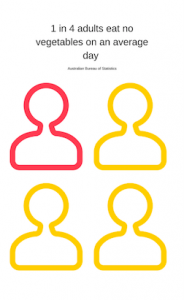For shoppers looking to save time in the supermarket, health star ratings have become somewhat of a salvation, but recent reviews have uncovered glaring loopholes.
Health star ratings on food packaging have been a trusted source of information for consumers, but the system has come under scrutiny.
A front of pack labelling system, implemented in mid-2014, condenses the often convoluted nutritional information of a product into a rating from 1½ to 5 stars. The system, adopted voluntarily by food and drink manufacturers, was designed to curb obesity rates and diet-related chronic diseases by supporting consumers in making health savvy choices.
However, an analysis of the system has isolated a concerning shortcomings. The selective use of health stars on some products at the exclusion of others has been slammed for its misleading effects on consumers vying for nutritious food.
More recently, the George Institute for Global Health in Sydney reviewed more than 24,000 packaged foods with health star ratings. The results revealed that 7 out of 10 packaged foods contained added sugar that wasn’t clearly identified by nutrition labels.
Data from the Australian Bureau of Statistics has found that Australians are consuming less fruit and vegetables, with only 7% of the population eating the recommended daily serving of 2 fruits and 3 vegetables. Processed foods are increasingly become commonplace in everyday diets, making nutritional information all the more essential.

Source: Australian Bureau of Statistics
Young people, who are notoriously over-represented in demographics consuming processed foods are at a particular risk for misinformation via front-of-package labelling systems. A report from the Australian Bureau of Statistics found that consumption of sweetened beverages increased with age across childhood. Peaking within teenagers aged between 14-18 years, the report found that 61% consumed sweetened beverages, a day prior to the study. 2 in 3 teenage males (67%) aged 14-18 years consumed Sweetened beverages, compared with 1 in 2 teenage females (55%).
Though the HSR rating system was designed to increase consumer awareness surrounding the brands they purchased, further research into the systems effectiveness has uncovered more flaws.
Popular brands including Milo and Nesquik were criticised for using health star ratings that assumed a specific serving size that didn’t reflect consumers consumption habits. For products that were consumed with dairy and the addition of other ingredients, it was a common trend to calculate the HSR using skim and fat free alternatives.
Moreover, selectively using HSRs on some products at the exclusion of others within the same brand created a “halo effect” whereby customers perceived all products within a range to be healthy because of an exclusive use of the HSR system.
Manufacturers of household favourites have defended their use of this front-of-packaging system by referring to brand websites which includes accurate and complete nutritional information. However, for time-poor customers without an awareness of digital platforms, this isn’t a functional answer.
In a statement, Kellogg’s said “all of our cereal packaging carry health stars and our rollout on snacks has coincided with our new products that have been launched since. We’ve also made HSR information for all our snacks available on our website since last year.”
Listen to experts explain the importance of HSRs and how the system can be improved.
Are HSR’s creating more issues that they’re solving? by mihika_h
Talents: Craig Sinclair, Obesity Policy Coalition Tom Godfrey, Choice Statement voice-over: Josh Harris Music: Podington Bear (freemusicarchive.org/music/podington_bear/) Image: PxHere
In a statement, popular muesli brand Carmens cited potential legislative changes in defence of their selective rollout of the rating system, saying, “We originally applied the Health Star Rating system in our breakfast range where it now applies to all products. We have commenced within our snacks range. We will of course implement any labelling system however while it is in review and there may be changes to the system we feel it best to wait until it is finalised.”
A formal five year report reviewing HSRs is set to be released in 2019.
